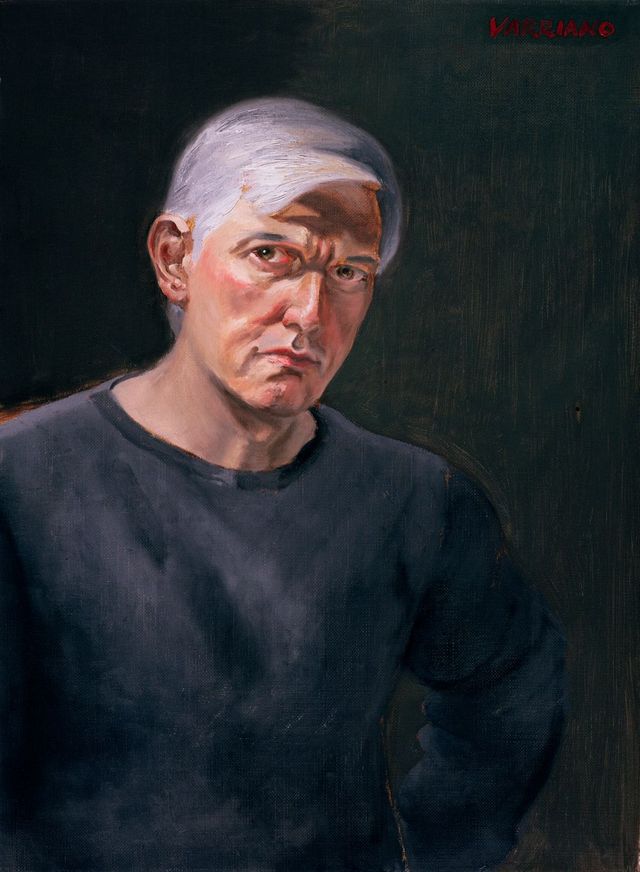The Evolution of Art: A Comprehensive Overview to Figurative Oil Painting
The Evolution of Art: A Comprehensive Overview to Figurative Oil Painting
Blog Article
The Role of Emotion and Expression in Figurative Oil Painting: An In-Depth Evaluation of Subject and Composition
The interplay of feeling and expression in figurative oil painting offers as a critical lens whereby one can check out the detailed connection between subject issue and make-up. Artists harness various methods, from shade option to brushstroke dynamics, to grow psychological vibration within their works. This nuanced orchestration not just forms customer perception but additionally invites a much deeper query into just how these aspects integrate to show the complexities of human experience. As we discover this rich surface, one should think about how details situation studies brighten the broader effects of these artistic selections.
Understanding Feeling in Art
Feeling in art serves as a powerful avenue for expression, allowing artists to communicate intricate feelings through their job. In metaphorical oil paint, this emotional depth is commonly portrayed through the depiction of the human figure, capturing the subtleties of human experience. The choice of topic, shade scheme, and brushwork all add to the emotional resonance of an item.
Artists regularly bring into play personal experiences, societal problems, or universal styles to stimulate sensations in the viewer. A picture might mirror vulnerability, while a dynamic figure in motion can symbolize freedom or turmoil. These emotional threads connect the audience to the artwork, fostering a dialogue that transcends the visual medium.
Moreover, the interplay between light and shadow can magnify psychological intensity, assisting the visitor's look and attracting interest to specific aspects within the structure. Making use of texture in oil painting better includes layers of intricacy, inviting a tactile feedback that boosts the psychological experience. Generally, comprehending emotion in art is essential for appreciating the subtleties that identify figurative oil painting, as it changes plain depiction into a profound exploration of the human problem.
Crucial Element of Structure
In the realm of figurative oil paint, the structure works as the underlying structure that arranges visual components and improves the psychological story. Necessary elements of composition consist of balance, comparison, focal factor, and rhythm, each adding to the total effect of the artwork.
Equilibrium refers to the circulation of visual weight within the paint, which can be accomplished via in proportion or asymmetrical setups. A well-balanced composition supplies stability, enabling the viewer to involve with the item harmoniously - figurative oil painting. Comparison, on the other hand, includes comparing different components, such as light and dark or cozy and great colors, to assist the viewer's eye and stimulate psychological actions
The focal point is essential, as it routes interest to the most considerable part of the paint, commonly highlighting the psychological core of the narrative. By masterfully integrating these vital elements, artists can craft engaging and emotionally resonant figurative oil paintings that astound and involve their audience.
Topic and Its Effect
Subject matter plays a critical function in figurative oil painting, as it not only works as the structure for the narrative yet likewise shapes the audience's interpretation and emotional engagement with the artwork. The choice of topic-- be it a solitary figure, a group dynamic, or a thematic depiction-- directly influences the psychological environment communicated to the target market.

As an example, portraits frequently stimulate individual connections, disclosing the complexities of human expression and personality, while scenes portraying communal activities can produce a sense of belonging or fond memories. Additionally, the cultural and historic context of the subject issue enhances the viewer's understanding, motivating deeper representations on societal norms, worths, and the human problem.
Different subjects additionally create varying degrees of involvement; a remarkable problem portrayed with numbers in stress might elicit feelings of anxiousness or compassion, while tranquil landscapes can conjure up harmony and consideration. Ultimately, her latest blog the impact of subject in figurative oil painting is extensive, as it works as a channel for psychological vibration, assisting the audience's feedback and analysis, and fostering a connection in between the onlooker and the artwork. This interplay is essential for the effective interaction of the musician's intent.
Strategies for Stimulating Feelings
The effectiveness of figurative oil painting in communicating emotions is dramatically influenced by the techniques employed by the artist. One of one of the most essential approaches is the usage of shade theory, where the calculated choice of colors can stimulate certain psychological reactions. Warm colors, such as reds and oranges, frequently generate feelings of interest or hostility, while cooler tones like blues and environment-friendlies tend to evoke peace or despair.
An additional necessary technique is the adjustment of light and darkness, understood as chiaroscuro. This method boosts the three-dimensionality of numbers, developing significant contrasts that can increase psychological deepness. The positioning of light can assist audiences' emotions, highlighting specific elements of the make-up.
Brushwork additionally plays a critical function; loose, expressive strokes can communicate energy and spontaneity, whereas smoother strategies may suggest tranquility or precision. The arrangement of topics within the make-up can affect emotional influence. Close distance can suggest intimacy, while distance might suggest seclusion.
Eventually, the combination of these strategies allows artists to craft narratives that resonate with the audience, changing a simple aesthetic experience into an expressive psychological trip. - figurative oil painting

Study of Remarkable Works
Taking a look at remarkable jobs of metaphorical oil painting exposes just how numerous techniques are used to stimulate powerful emotions. One exemplary situation is Edvard Munch's "The Scream," where the altered figure and swirling background communicate existential fear. Munch's usage of color-- deep blues and brilliant oranges-- magnifies the emotional effect, showcasing just how palette choices can shape audience experience.
One more considerable work is Pablo Picasso's "Les Demoiselles d'Avignon." Right here, strong brushstrokes and fragmented types show a troubled emotional landscape, challenging conventional representations of the female figure. Picasso's cutting-edge make-up not only catches the audience's attention but also welcomes reflection on styles of identity and sexuality.
Additionally, Frida Kahlo's "The Two Fridas" provides a poignant exploration of duality and self-identity. The contrasting figures, connected by a common heart, exhibit Kahlo's psychological depth and personal story. figurative oil painting. Her precise interest to detail and symbolic elements offer to here involve audiences on a natural degree
These situation studies emphasize the extensive link in between emotion and composition in metaphorical oil painting, revealing exactly how artists harness strategy to interact complex sensations and narratives that reverberate across time and culture.

Verdict
To conclude, the interplay view publisher site of emotion and expression in metaphorical oil painting considerably enhances the customer's experience and analysis of the artwork. With a mindful selection of topic and compositional techniques, artists share profound narratives that reverberate on both personal and global levels. The application of color chiaroscuro, concept, and brushwork further enhances psychological deepness, transforming each canvas into an effective representation of the complexities of the human experience.
In figurative oil painting, this emotional deepness is often depicted with the representation of the human number, capturing the nuances of human experience.Additionally, the interaction in between light and darkness can amplify emotional intensity, assisting the viewer's gaze and attracting interest to specific components within the make-up. The usage of texture in oil painting further adds layers of complexity, inviting a tactile reaction that enhances the emotional experience.The focal point is important, as it guides interest to the most considerable part of the painting, typically highlighting the emotional core of the narrative. Ultimately, the impact of subject matter in figurative oil paint is extensive, as it offers as an avenue for psychological resonance, directing the audience's reaction and interpretation, and fostering a link between the viewer and the art work.
Report this page